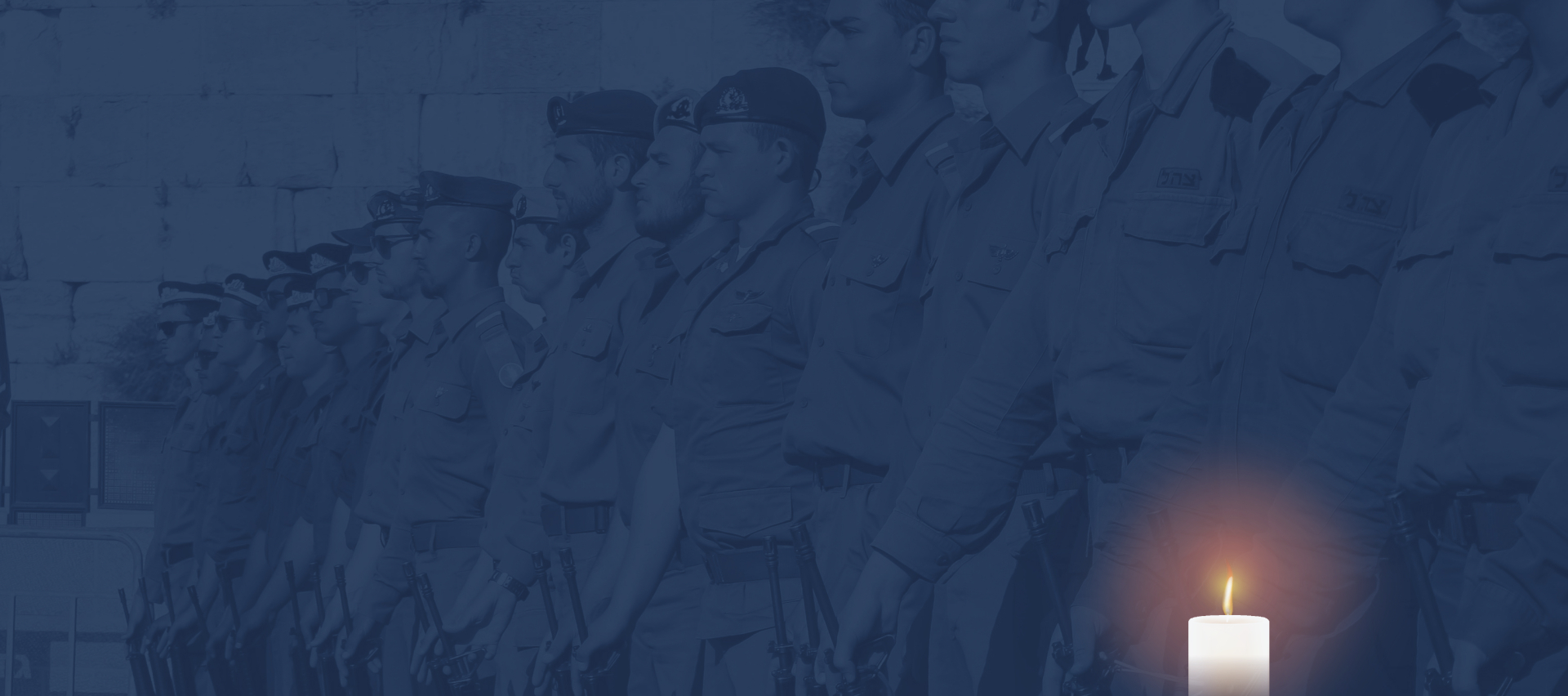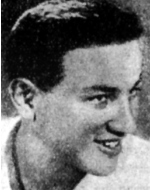,אֵ-ל מָלֵא רַחֲמִים, שׁוכֵן בַּמְּרומִים, הַמְצֵא מְנוּחָה נְכונָה
,עַל כַּנְפֵי הַשְּׁכִינָה בְּמַעֲלות קְדושִׁים, טְהורִים וְגִבּורִים
כְּזֹהַר הָרָקִיעַ מַזְהִירִים, לְנִשְׁמות חַיָּלֵי צְבָא הֲגָנָה לְיִשְׂרָאֵל



Hirschberg, Aharon (Arthur, Artek)
Aharon, the son of Sucha and Leo, was born on May 27, 1926 in Poland, in the city of Przemysl in the Galicia region. A member of a respected family in the city. He attended elementary school and went on to high school. Between the two world wars, Przemyśl was controlled by Poland. The 19,400 Jews living within its borders conducted a diverse political life and operated religious, cultural and welfare institutions. On September 1, 1939, World War II broke out with the German invasion of Poland and its conquest in the lightning war (“Blitzkrieg”). Immediately thereafter, anti-Jewish decrees and regulations were issued that resulted in the social isolation of the Jews, their economic deprivation, and the undermining of all their systems of life. Przemyśl was conquered by the Germans on September 14, 1939, and immediately the murders began, during which about 600 Jews were slaughtered. The area was later annexed to the Soviet Union, but the Germans took over again in June 1941. In July of that year a Judenrat was set up, and some 1,000 Jews were transferred to forced labor camps. In 1942, about one thousand young people from Przemyśl were sent to the Janowska camp in Lvov, where they were forced to work in a network of factories of the German military industry. In the summer of 1942, 22,000 Jews from Przemyśl and its environs were rounded up in a ghetto, of which about 10,000 were deported to the Belzec extermination camp. Gradually, all the Jews of Przemysl were deported to the death camps until the final liquidation of the ghetto in September 1943. Aharon joined Komsomolski, the Communist youth movement, during the annexation to the Soviet Union. After the Germans returned he tried to escape from the ghetto and join the partisans as part of the “Stalin Brigade” – but was caught. He was sentenced to death and miraculously saved. Aharon’s brother was hanged before his eyes after he tried to escape from the death car. The rest of the family was exterminated in Treblinka. Aharon himself was transferred to a labor camp in Auschwitz and his life was saved thanks to his being fit for work. Working with American and British prisoners of war, Aharon defended the honor of a Jewish youth who was beaten by a member of the Hitler Jugend. He was sentenced to death again, but with the help of the foremen, who recognized him as one of the best workers, he was pardoned. With the beginning of the Soviet army’s offensive in the direction of Krakow and Auschwitz, in mid-January 1945, the Nazis began a hasty retreat. Aharon was sent with other inmates to the Nordhausen camp in the Lev of Germany, on a 15-day journey in open cars. He stayed there until the middle of 1945, when he was released by the American army. After the war Aharon returned to Poland to ask for a remnant of his family. When he did not find it, he took the Bericha route. In Landsberg, Germany, he stayed with the Betar group, where he moved to Italy, where he joined the Dror kibbutz and joined the Haganah, but when he heard that the organization had stopped its struggle against the British, he joined the Irgun, It. He traveled to France via Germany, and on January 18, 1946, he boarded the “Negev”. The illegal immigrant ship “Negav” was purchased in Italy by the Haganah’s Mossad Le’Aliya Bet. She left the port of Set, France, carrying 647 immigrants from various countries, including members of youth movements and former partisans. The voyage was accompanied by technical and other difficulties that often threatened the lives of the immigrants: the food ran out, there was a storm in the sea, and the water began to penetrate the ship. On February 5, 1946, the “Negev” was discovered by the British. Two destroyers clung to her and dozens of British soldiers, armed with gas masks and clubs, boarded the deck. After a violent struggle, during which Aharon was severely injured, the British surrendered the immigrants. The “Negev” was towed to the port of Haifa, where a battle developed again, during which one of the Ma’apilim was killed. Later, the illegal immigrant ship Ma’apil was named after him. After the “Negev” immigrants were forcibly removed from the ship, they were deported to Cyprus. Aharon was interned in the detention camp on Cyprus for two years. It took him a long time to recover from the wounds of the battle against the British, and he used the time to learn Hebrew. He later became one of the main activists of the Israel Epstein Battalion, a member of the Irgun, who blew up the British Embassy in Rome, and arrived on February 19, 1948 aboard the Kedma ship, , Met with his relatives and shared their painful past experiences, but the family reunion did not last long, although they urged Aaron to rest, recuperate and become acquainted with the life of the country, had he had other intentions: “He was riddled with revolutionary ideas. He was not the only one, came with a friend with whom he had ties as brothers. “Aharon enlisted in the Haganah and was attached to Givati, Division 5. When they searched for ten volunteers, he volunteered immediately, saying,” The soul of the people is in danger, Daring with agility, enthusiasm, and tremendous will without hesitation. We have committed ourselves to this and have been entrusted with a pioneering and responsible role and must fulfill it properly. Not a word, but an act of self-sacrifice. “He spent a month in defense positions in Be’er Ya’akov, where Aharon was outstanding in his role, and when he received the” Stan “there was no limit to his happiness. We went out for the first time to practice stanim around Beer Yaakov. Twenty minutes later the Arabs of Ramle surrounded us and opened fire on the group. We received an order to take positions. “When he got up, Aharon was hit by a bullet in the stomach, and when he was wounded he held the stan and ran a few hundred meters toward the positions in an effort to rearm. They came to our aid. Arthur could not be taken to the hospital immediately because the road was occupied by the Arabs. Arthur lay unconscious for four and a half hours. When he opened his eyes, his first question was: ‘Where is the satin?’ When they told him that Stan had saved his life, he said, “I will recover and return to my position.” Aharon was taken to Hadassah Hospital in Tel Aviv and was severely injured. 1948), died of his wounds, twenty-two years old, and Aharon was brought to eternal rest in the military cemetery in Nahalat Yitzhak, in memory of Aharon was established at Kibbutz Ramat Raziel, where he was able to stay for a short time. (Parents, brothers, sisters, sons and daughters), who had personally experienced the Holocaust in the ghettos and / or concentration and extermination camps and / or in flight and in hiding in the occupied territories And by the Nazis and / or fighting alongside members or partisans Underground Nazi-occupied territory who immigrated to Israel, during the Second World War or after, uniforms and fell in Israel’s wars.

